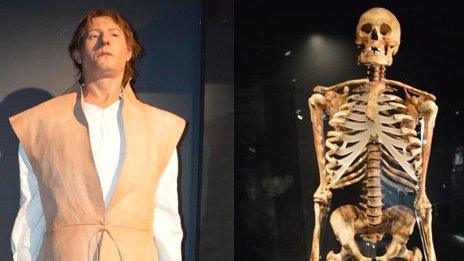Mary Rose warship: Memories of raising sought on 40th anniversary
- Published
The wreck was raised in October 1982, 11 years after it was discovered on the Solent seabed
Memories of the raising of the Mary Rose are being sought, 40 years after Henry VIII's flagship was raised.
Millions of TV viewers watched the moments when the timber structure was brought to the surface of the Solent for the first time in 437 years.
The Mary Rose Museum is appealing for people's recollections for an anniversary blog.
A ceremony was held earlier at the spot where the ship sank to mark the occasion.
The warship famously sank in 1545 while leading an attack on a French invasion fleet, with Henry VIII looking on from nearby Southsea Castle.
It is thought about 500 soldiers and sailors perished when the ship went down.

The warship is visible from all nine galleries of the Mary Rose Museum
The wreck site was discovered, about 40ft (12m) down, on the seabed in 1971.
It was raised on 11 October 1982 as the culmination of a massive archaeological and engineering project, which King Charles - then Prince of Wales - had taken a keen personal interest in.
Mary Rose has been called a "Tudor time capsule", with thousands of artefacts on board, including weapons and personal possessions of the crew, now on show at the museum.
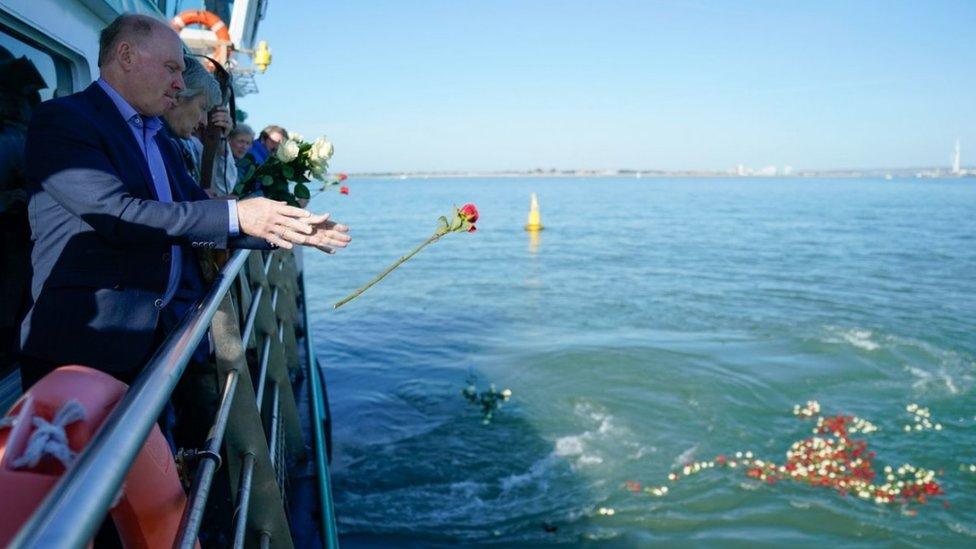
Nigel Purse, chairman of the Mary Rose Trust, and other guests cast 500 roses into the sea earlier
The wreck was taken to an atmospherically controlled dry dock where it was sprayed with a mist of cold water, then water-soluble wax, before an air-drying process began.
It is now housed in a £39m purpose-built museum in Portsmouth Historic Dockyard with visitors able to view it though floor-to-ceiling windows and walk along a balcony entered through an airlock.
Some of those involved with the effort to raise the vessel joined school children and other guests who sailed to the spot on the Solent for a ceremony during which 500 hundred roses were scattered on the water.
Dominic Jones, chief executive of the Mary Rose Trust, said the ship had "opened a portal into Tudor life".
"We are beyond proud to be celebrating 40 years since the raising of the Mary Rose.
"The dedication and effort involved in this world-leading project is truly staggering, and we relish the opportunity to share our story and that of the hundreds of individuals involved with the internationally significant ship," he added.
Allow X content?
This article contains content provided by X. We ask for your permission before anything is loaded, as they may be using cookies and other technologies. You may want to read X’s cookie policy, external and privacy policy, external before accepting. To view this content choose ‘accept and continue’.
The Mary Rose Museum is calling for people to contribute to its blog, external with memories of where they were on 12 October 1982, when the wreck was raised.
A flotilla of small ships surrounded the lift site while crowds looked on from the shore.
There was an estimated worldwide TV audience of 60 million watching, including many school children who had followed the build up to the raising on Blue Peter.

Mary Rose - Timeline
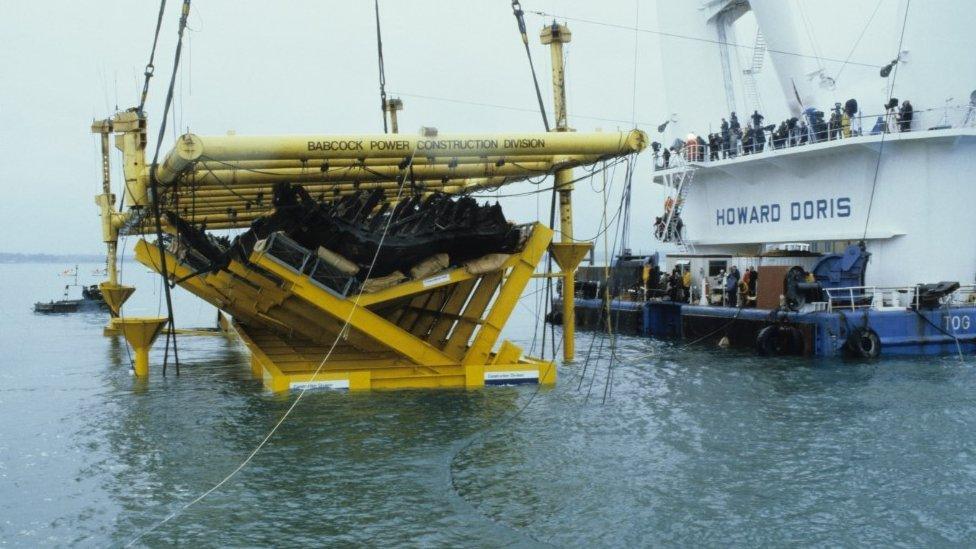
The Mary Rose was the flagship of King Henry VIII
1510 - The ship is ordered by the newly crowned King Henry VIII and construction begins in Portsmouth. It is launched in 1511.
1545 - On 19 July, at the Battle of the Solent, the ship sinks while leading the attack on the French invasion fleet.
1549 - 1836 - After expert Venetian salvors make unsuccessful attempts to raise the wreck, the ship lies undisturbed for almost 300 years.
1836 - Early pioneering divers, John and Charles Deane, discover the wreck site and raise guns using explosives. They later lose its location.
1965 - A new search for the wreck begins.
1971 - Divers see the first exposed timbers and the site is identified as the Mary Rose.
1979 - 1982 - The ship's contents are excavated by divers and more than 19,000 artefacts are brought to the surface.
1982 - The wreck of the hull is raised. The event is watched live on television by an estimated 60 million people worldwide.
2013 - A £35m Mary Rose Museum opens in Portsmouth.
2016 - Museum visitors finally get an unobstructed view of the wreck.

Follow BBC South on Facebook, external, Twitter, external, or Instagram, external. Send your story ideas to south.newsonline@bbc.co.uk, external.
Related topics
- Published11 October 2022
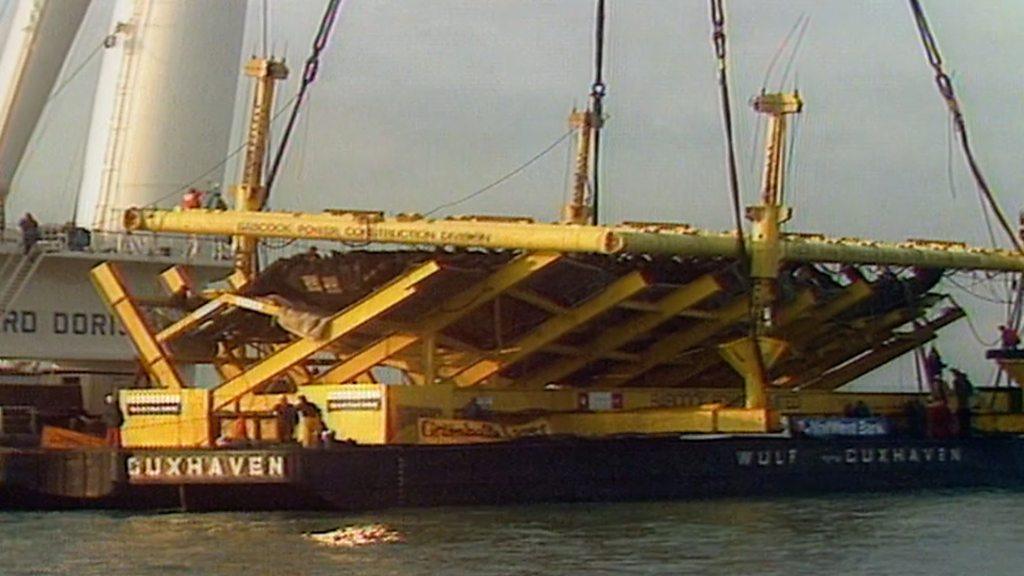
- Published5 May 2021
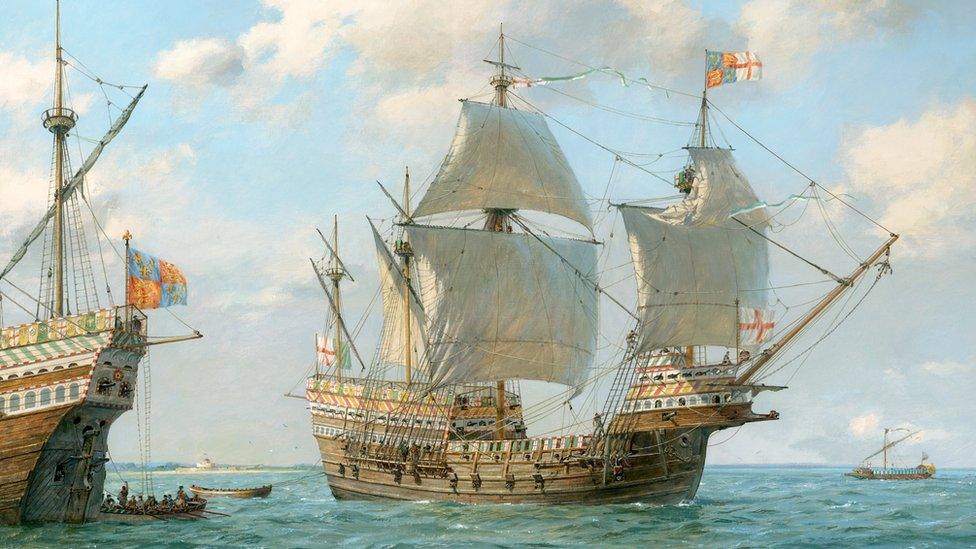
- Published19 July 2016
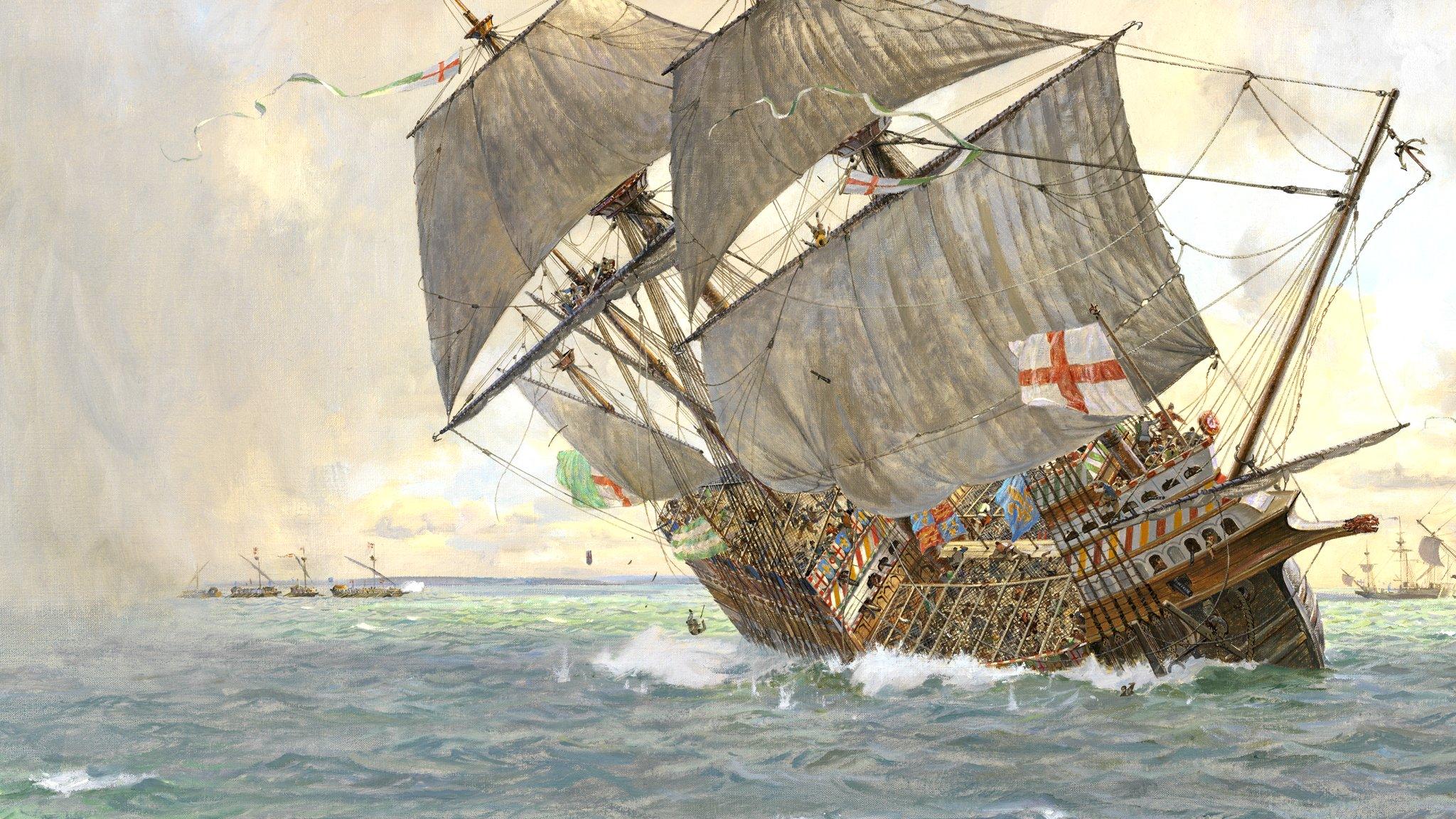
- Published11 April 2015

- Published16 December 2014
